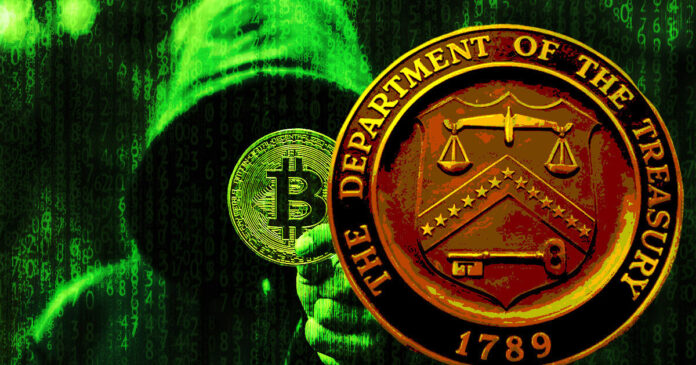The U.S. Treasury Department said on Feb. 8 that its latest risk assessments show that virtual assets currently represent a small fraction of total money laundering flows compared to fiat currencies; however, they are becoming an increasing concern for regulatory and enforcement agencies.
The regulator revealed the findings in its 2024 National Risk Assessments for Money Laundering, Terrorist Financing, and Proliferation Financing. The reports point to an evolving landscape of cryptocurrencies and other virtual assets as both an innovative financial frontier and a new avenue for criminal exploitation.
Despite accounting for a minor portion of the total financial flows involved in money laundering, the burgeoning sector of virtual assets raises significant regulatory, compliance, and enforcement questions.
Regulatory concerns
A major concern the Treasury raises is inconsistent compliance with AML/CFT regulations across different jurisdictions. This inconsistency, coupled with the unique features of virtual assets that facilitate anonymity and cross-border transactions, poses significant challenges in curbing money laundering activities.
According to the report, the adaptability of money launderers to the digital age is evident in their use of sophisticated tools and methods to obscure the origins of illicit funds. It details how criminals leverage various technologies and methods to obscure the origins of illegal funds, complicating the efforts to trace and counteract money laundering.
Techniques such as mixing services, privacy coins, and chain hopping between different blockchain assets are particularly concerning. These methods, alongside the use of unhosted wallets and platforms that allow direct peer-to-peer transactions without intermediary oversight, significantly hinder the effectiveness of AML/CFT measures.
The decentralized nature of many virtual asset transactions, especially within DeFi, further exacerbates these challenges by offering a shield of anonymity to those seeking to bypass regulatory oversight. The report highlights the complexities of DeFi platforms and virtual asset investment schemes, which have become fertile grounds for fraud and money laundering.
According to the Treasury, the lack of centralized control and the anonymity provided by these platforms pose substantial risks, with criminals exploiting these features for illicit activities, including ransomware payments and laundering stolen funds.
Road ahead
To address these challenges, the Treasury advocates for enhanced regulatory frameworks, improved compliance practices among virtual asset service providers (VASPs), and increased collaboration between regulatory bodies and the virtual asset industry.
Establishing clear guidelines and adopting advanced analytical tools are crucial for mitigating the risks associated with virtual assets. Additionally, the Treasury emphasizes the importance of international cooperation to ensure a cohesive global approach to regulating and monitoring the rapidly evolving virtual asset marketplace.
The report also emphasized the need for continuous adaptation and vigilance to address the evolving landscape of virtual assets and their use in money laundering activities, suggesting a multi-faceted approach involving technological innovation, regulatory adjustments, and international collaboration.
Credit: Source link






















 Bitcoin
Bitcoin  Ethereum
Ethereum  XRP
XRP  Tether
Tether  Solana
Solana  USDC
USDC  Dogecoin
Dogecoin  Cardano
Cardano  Lido Staked Ether
Lido Staked Ether  TRON
TRON  Wrapped Bitcoin
Wrapped Bitcoin  Wrapped stETH
Wrapped stETH  Chainlink
Chainlink  Avalanche
Avalanche  Sui
Sui  Stellar
Stellar  Litecoin
Litecoin  Shiba Inu
Shiba Inu  Toncoin
Toncoin  Hedera
Hedera  LEO Token
LEO Token  USDS
USDS  Hyperliquid
Hyperliquid  Polkadot
Polkadot  WETH
WETH  MANTRA
MANTRA  Bitcoin Cash
Bitcoin Cash  Ethena USDe
Ethena USDe  Bitget Token
Bitget Token  Wrapped eETH
Wrapped eETH  Uniswap
Uniswap  Monero
Monero  NEAR Protocol
NEAR Protocol  Pepe
Pepe  WhiteBIT Coin
WhiteBIT Coin  Aave
Aave  Ondo
Ondo  Bittensor
Bittensor  Aptos
Aptos  Internet Computer
Internet Computer  Dai
Dai  Official Trump
Official Trump  Ethereum Classic
Ethereum Classic  Mantle
Mantle  Tokenize Xchange
Tokenize Xchange  OKB
OKB  Gate
Gate  sUSDS
sUSDS  Coinbase Wrapped BTC
Coinbase Wrapped BTC 
